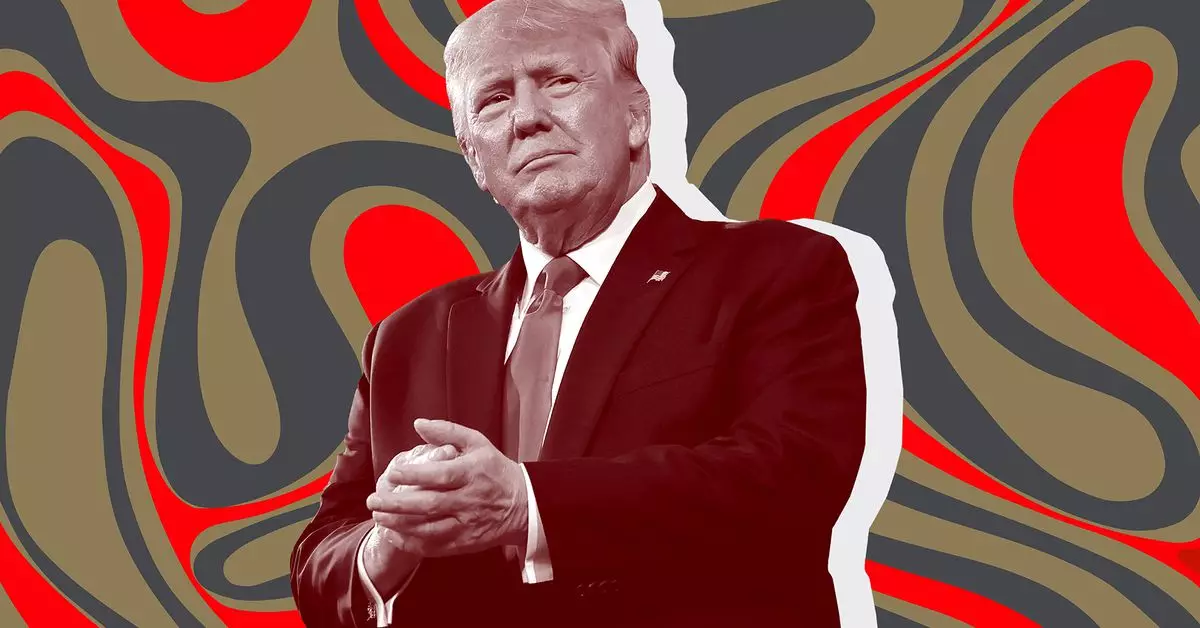The recent foray into the cryptocurrency space by former President Donald Trump, through his initiative World Liberty Financial, has generated significant buzz and skepticism alike. This groundbreaking project aims to pioneer a decentralized finance (DeFi) platform. However, as the dust settles from the launch, it becomes pertinent to dissect the implications, challenges, and real-world applicability of such an enterprise.
World Liberty Financial commenced its token sale on a day that, rather ironically, coincided with a host of technical glitches; the platform’s website buckled under what appeared to be an overwhelming wave of interest. Reports indicated that over 100,000 individuals registered to participate in the purchase of WLFI tokens, whose sale began on September 30. However, statistics reveal that only a fraction of those interested—5,317 distinct wallet addresses—actually acquired the token by Tuesday afternoon.
This disparity raises questions about marketing effectiveness and the realistic engagement levels of potential investors. The website’s crash, linked to a staggering 72 million visits in its initial hour, indicates a mismatch between the hype generated and the operational readiness of the platform. The backlash from user experiences can create a long-lasting impact on the project’s credibility.
According to World Liberty Financial, more than 532 million tokens were sold out of a proposed 20 billion. The WLFI token, intriguingly, is non-transferrable at present, a feature likely designed to stabilize its initial distribution. Token holders are purported to enjoy governance rights regarding the platform’s future upgrades and security oversight. However, the current restrictions placed on purchases pose a glaring paradox; while the initiative claims to uplift underserved communities and provide banking alternatives, it conveniently restricts access to accredited investors—especially in light of the SEC’s rigorous guidelines.
To qualify as an accredited investor, individuals must possess a minimum income of $200,000, or a net worth exceeding $1 million, excluding their primary residence. This creates an exclusive barrier that vehemently contradicts the stated mission of providing financial access to the unbanked demographic.
At the helm of this ambitious venture is not only Donald Trump but also his sons, notably positioned as ‘Web3 Ambassadors.’ This familial connection to project governance casts a spotlight on the administration’s overarching objectives. The initial documentation referred to as a “gold paper” draws cautious intrigue, particularly due to Trump’s title as the “chief crypto associate.” Given that cryptocurrencies are often perceived as unregulated territory, aligning such an initiative under the brand of a former president may be interpreted as an attempt to legitimize and solidify public confidence.
Nonetheless, the reliance on high-profile endorsements does not inherently ensure a lasting impact within the highly volatile market of cryptocurrencies. It remains to be seen if the leadership structure and strategic vision can withstand the scrutiny that often accompanies projects emblematic of celebrity influence.
Moving forward, World Liberty Financial faces multiple hurdles. Firstly, the compliance landscape for cryptocurrency ventures is increasingly fraught with complexities. Engaging with regulators, especially the SEC, will demand a finely-tuned strategy to mitigate risks and ensure legal alignment in operations. Furthermore, the marketplace sentiment around any cryptocurrency is notoriously fickle, subject to rapid shifts based on external economic influences and regulatory feedback.
Additionally, despite the enticing vision of integrating third-party DeFi applications and expanding access to digital wallets, the operationalization of such features remains opaque. Stakeholders must grapple with the balance of ambition and tangible results as they navigate the path toward meaningful innovation.
While World Liberty Financial’s entry into the cryptocurrency space is heralded as a bold move, it is essential to analyze both the promises it presents and the obstacles it faces. The alignment between the proclaimed mission of inclusivity and the practicalities of investment qualifications paints a complex portrait. The coming months will be crucial for gauging the project’s value proposition and its ability to turn initial interest into lasting engagement. Ultimately, the sustainability of this venture will hinge on transparency, governance, and the adaptation to rapid technological and regulatory developments in the cryptocurrency arena.


Leave a Reply